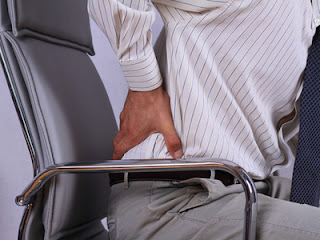Aging carries the risk of experiencing chronic pain at some point in your life. How doctors treat discomfort can make a significant difference, as some treatments can lead to addiction and overdose. The list of side effects that come with prescription opioids is long, and opioid narcotics can cause serious heartache for anyone, even if they are taking them as prescribed. Of course, for those who can’t ingest any drugs, those working a program of recovery, for instance, the risk of taking opioid painkillers is severe. So, what is someone in recovery who experiences chronic pain to do?
In recent years, more and more researchers have come to believe that prescription opioids are not the best treatment for chronic pain. It is not just the risk overdose and addiction that has changed scientists perspectives on opiates; studies show that patients taking drugs like OxyContin don’t fare any better than people taking over the counter analgesics or patients utilizing alternative pain management techniques. Nevertheless, doctors are still prescribing such drugs at an alarming rate.
There is a great need to offer patients efficient pain management without risk to life. One demographic that needs access to such remedies are recovering alcoholics and addicts; after all, people in recovery have chronic pain, too. One of the most common forms of chronic ailment is lower back pain; it is a condition that millions of Americans struggle with on a day to day basis. Research shows that more than 60% of individuals with lower back pain are given opioids in the U.S., UPI reports. What’s more, the findings indicate that physical therapy and exercise is the best remedy for this type of pain; which means, not only are patients at risk—there treatment isn’t the most effective.
Non-Addictive Pain Management
The need for providing pain management without severe risks to patients hasn’t been lost on researchers around the country. A small group of scientists from the University of Virginia is creating transdermal patches that administer non-addictive pain medicine, Medical Xpress reports. The method won’t be your average pain patch; instead it will incorporate heat sensors and microneedles administering lidocaine (a local numbing agent). The system will utilize several technologies to provide the best relief without the risk.
The lidocaine system should be far more effective than patches utilizing the same medication. The new method would give patches far greater control over when and how much of the medicine is released, according to the article. The system could be ready for clinical trials in the next five years.
“We want to relieve pain for patients while also reducing the use of potentially addictive opioids,” orthopedic surgeon Dr. Joshua Li said. “Our goal is to help patients effectively participate in managing their own pain without fear of becoming dependent on medications.”
Opioid Addiction Treatment
Hope by the Sea can help you or a loved one break the cycle of prescription opioid addiction and give you the tools for living a life in recovery. Please contact us today to discuss your treatment options.


